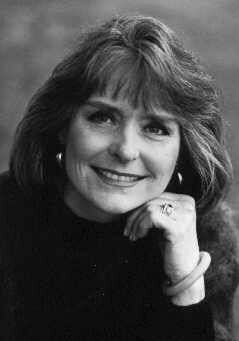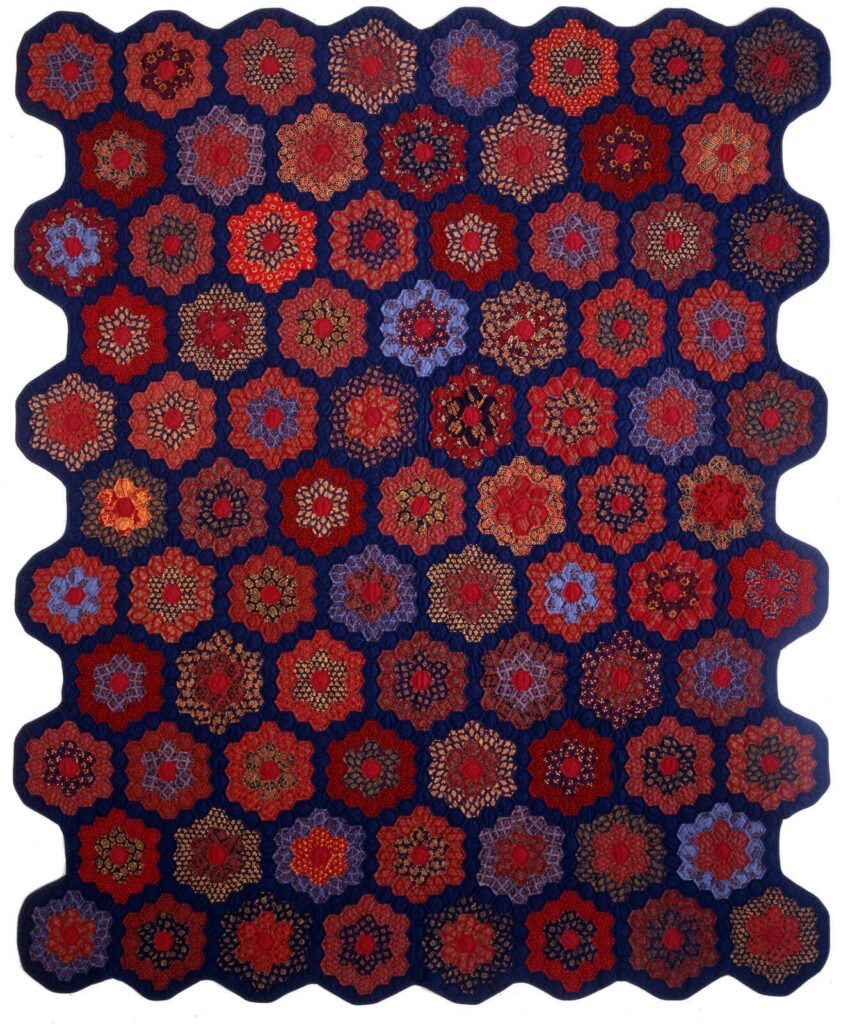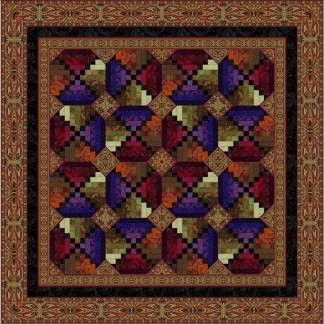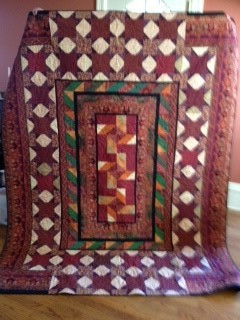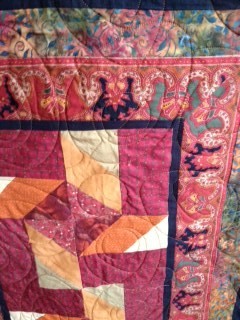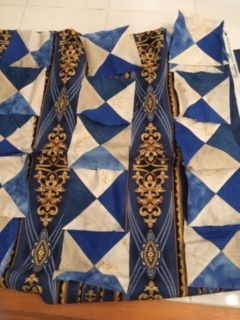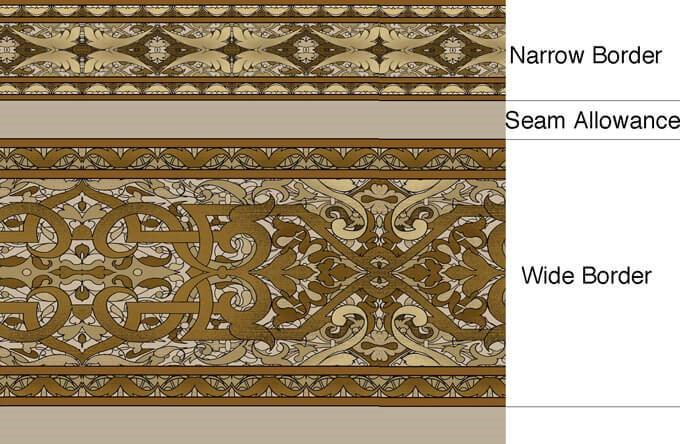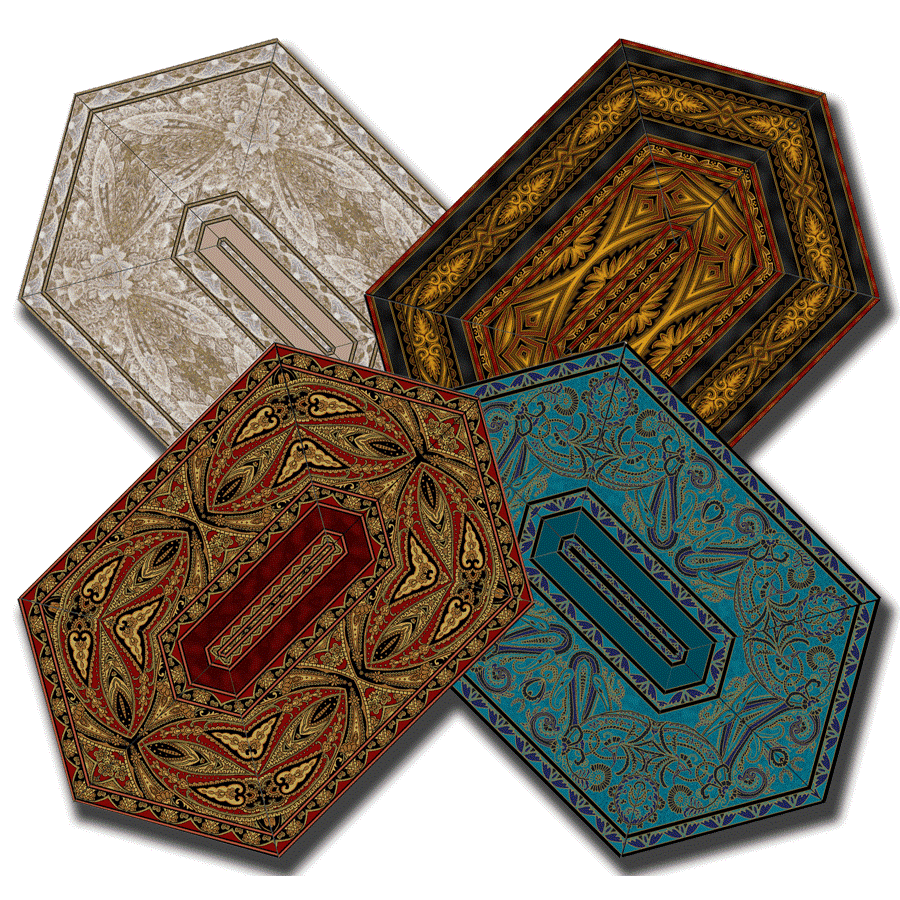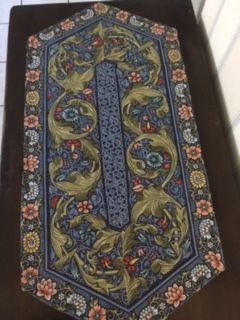How’s this for a tee shirt or Facebook meme?
Everything I needed to know about color, I learned from Jinny Beyer.
It’s not quite accurate; I’ve known the color wheel most of my life, and as a dyer, I’ve read lots about color. But if there is one person in modern quilt history who is inextricably associated with color, it’s Hall of Fame Honoree Jinny Beyer.
Her quilting story began in India (read a full account here: https://quiltershalloffame.net/jinny-beyer/ ) where things were different from quilting in the States. At a time when dusty rose, dusty blue and seafoam green were the standard, Jinny worked in vibrant colors. Here’s her first quilt, made with Indian fabrics. It wasn’t going to fit in with the country look of the 1970s, but she worked with what she had—and achieved spectacular results.
If you read her Hall of Fame bio, you know that Jinny came home to the US and received lots of encouragement from Hall of Fame founder, Hazel Carter. (I love the inter-connectedness of the quilt world. And I especially love the theme of women helping women.) With Hazel and her guild cheering her on, Beyer jumped into competition. Here’s a photo of Jinny’s “Ray of Light” which won the Good Housekeeping and U.S. Historical Society contest, “The Great American Quilt”.
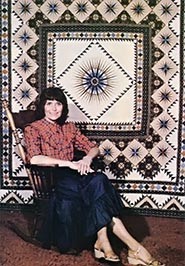
If you are up for a dip in the pool of hippie/ self-sufficiency culture (and some context for Jinny’s work), check out the full article at https://www.motherearthnews.com/nature-and-environment/jinny-beyer-master-quilter-zmaz81ndzraw Among other things, they describe Jinny’s paper folding technique for adjusting pattern size. There are better photos of the quilt on the internet, but I couldn’t resist the throwback. And if you want to see more quilts that Jinny has made, view the gallery on her website: https://jinnybeyer.com/quilt-gallery/ .
But let’s get back to the notion of color. This is a quilt that is currently for sale as a kit or pattern on the Jinny Beyer website.
Would you look at that? It’s brown and purple, and it works! What is this sorcery? It’s not dark magic, it’s Jinny’s color theory in operation. Using the method described in her book, Color Confidence for Quilters, you can put any colors together, as long as you make the proper transitions. And how do you do that? Well, to truly understand the process, you should read the book, but I can give you a very simplified visual using an object in the Hall of Fame Collection, a “Jinny Beyer Palette Poster”. (Warning label: I’m really leaving out a lot. The book is worth your time.)
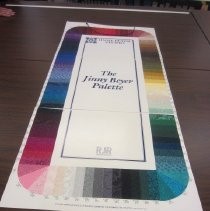
The poster shows 100 fabric swatches in the original fabric line that Jinny designed—all tone-on-tones or blenders. Start with a brown in the upper right, and go counter-clockwise around to the purples in the upper left. You’ll notice that this took you through some reds and oranges. And now go back to the quilt image, and you’ll find the same color range there.
This was heady stuff when it first came out (and still useful today). So much so that Wikipedia says, “Encyclopedia Britannica and RJR Fabrics credited her for being one of the first designers to form a fabric collection suited to the needs of quilters.” Of course, you can apply the Beyer method with other fabric, but it’s just too yummy to look at the palette pre-cuts she offers.
And now, here’s my quilt that I also called Marrakesh.
You’ll notice that I did not blend successfully (the green doesn’t fit—it’s in the inner border fabric, but I should have gone clockwise on the poster, from the reds through some yellows and golds to get to it) and I need to learn to miter. But I thought I was pretty creative when I ran out of outside border fabric and compensated with a stepped-in frame—kinda like a rug you would get at the market in Marrakesh.
So that’s my segue into another thing that Jinny Beyer has contributed to the quilting world: border fabrics. Talk about bang for your buck! Border fabrics do the work so you don’t have to. If you want an easy traditional quilt, you can alternate strips of the border fabric with columns of a simple block. All the design impact, and half of the piecing. It’s been on my “To Do” list; note the date in the selvedge.
Or, if you’re doing a round robin with friends, or otherwise going for the center medallion-style, border fabrics are your friends. (Timely for the AQSG 2021 Quilt Study which is “Framed Center/Medallion Quilts: History of a Style”.) Dare I say it? Border fabrics can really cut corners.
Or, if you’re truly ambitious, you can use border fabric as a design element, as in this quilt from one of Jinny’s many books.
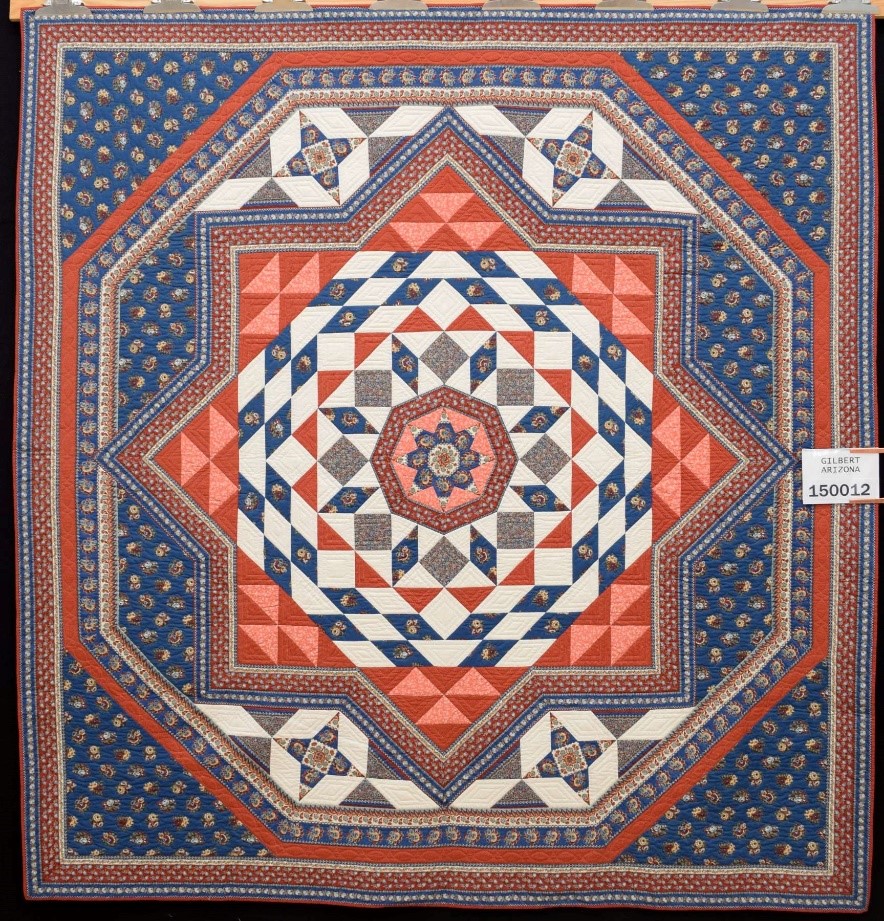
Or, sometimes, the border fabric inspires the colors of the field as in this original design using blocks from Jinny’s book ‘The Quilter’s Album of Blocks and Borders’.
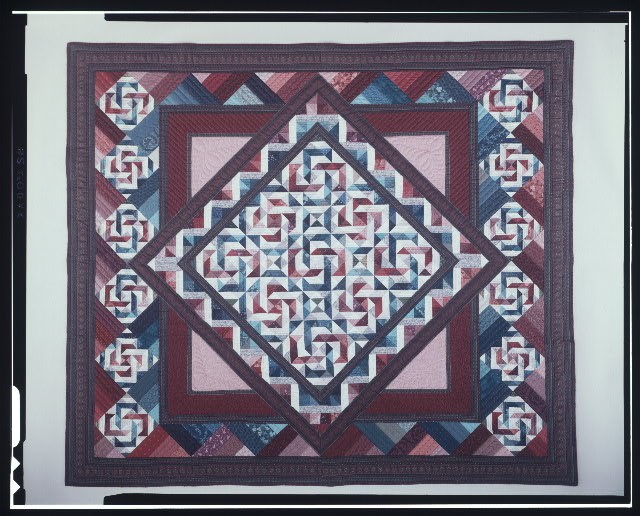
Here’s the Casablanca border from the Marrakesh quilt. (You’ll notice it’s really red, not brown. But it reads as brown in the photo above, so I took some poetic license to make my brown/purple point.) Next to it is a different print showing Jinny’s design genius. Many border prints on the market just repeat a single design, leaving you to figure out what part you want to lose in the cutting. But these all have a built-in seam allowance and two sizes, proportioned to the Golden Mean ratio to give you flexibility.
Although her designs are suitable for reflective piecing (think four patch posey or one block wonders), Jinny seems to use border fabric mostly as a frame for her quilts. I enjoyed reading about Jinny’s design decision-making on her blog at https://jinnybeyer.com/category/blog/borders . You can she how she works with color and decides which border best complements a quilt—a real step by step journey through the creative process.. There’s also lots of information about working with border fabrics here https://jinnybeyer.com/tips-and-lessons/working-with-border-print-fabrics/ .
There’s also lots of free stuff on the general site, including a pattern for table runners. Notice how the designs are perfectly matched, and compare mine using a non-Beyer border print.
I think I need to get the pattern and go shopping for some more Jinny Beyer fabric; this is going to be a costly blog, but all of Jinny color and opulence has made it worth it. Stay tuned to see if I actually sew something.
Your quilting friend,
Anna
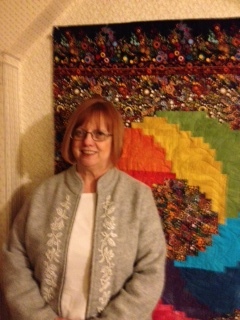
I’m Anna Harkins, and I volunteer on the Collections Committee at The Quilters Hall of Fame. What else would you like to know about me? Married, no kids; one old horse, retired, and live in a western suburb of Chicago. I’ve been quilting for about 20 years (I wish I could say I learned from my grandmother, but some of us come to this later than others), and I’m a quilt history dilettante, “a person who cultivates an area of interest, such as the arts, without real commitment or knowledge.” There are real scholars among you, and I have no pretensions to that level—hats off to you! But I am interested, especially in the people who have made up the quilt world here in the US, which is why I’ve agreed to blog for The Quilters Hall of Fame. I plan to write every week, and I hope you’ll join the discussions.

